Blackmagic Cloud Pod Software
Let us just get to how easy this is to use. We are taking screenshots from a Windows PC. We expected the Mac platforms to work easily given how Blackmagic products usually work well with the Apple ecosystem. If your use case is you simply want to get a USB SSD onto the network, this is plug-and-play. There are no wizards. There is no setup. You plug in power, network, and 1-2 SSDs and a few seconds later, the Cloud Pod is discoverable on the network.
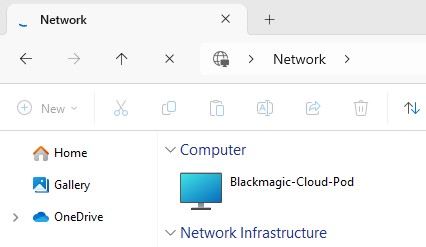
The only somewhat strange thing we saw was that we needed a username and password. By default, this is guest and guest.
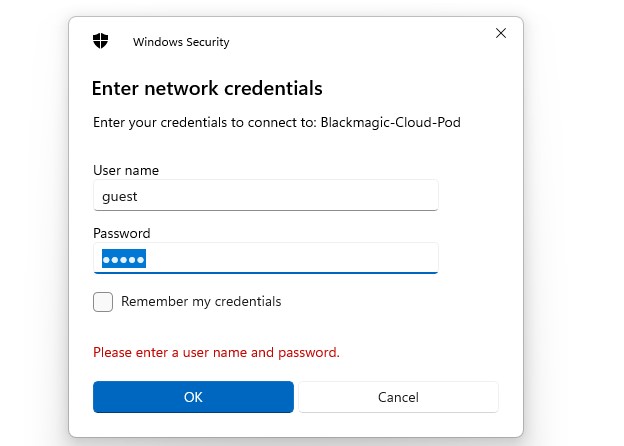
We are using two Samsung T7 Shield external SSDs (Amazon Affiliate.) The Cloud Pod gave them each shares and they were usable.
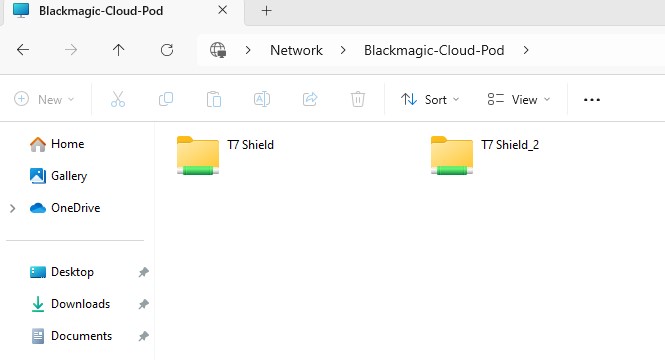
Going back to the HDMI port, this is what you would see using the HDMI display output at this point. Think of this more as a slightly fancier version of a LCD screen on the front of a QNAP NAS, but without the little buttons to go through displays and menus. This is just a display.
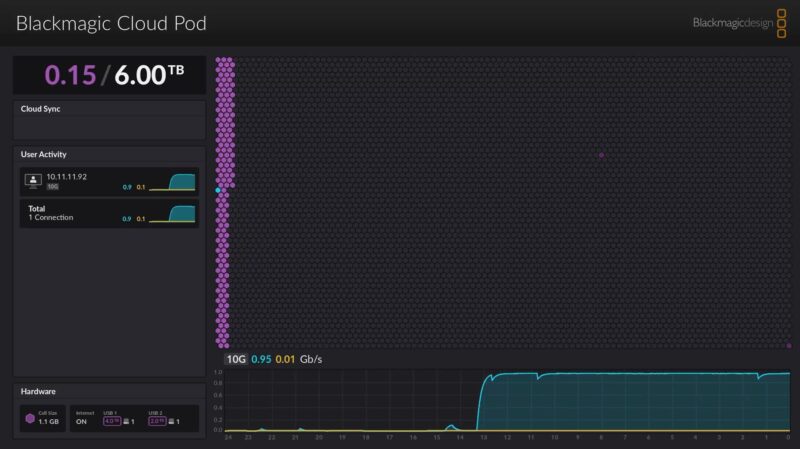
Some folks say there is no management. That is not entirely true. You can download the Cloud Store Setup for Mac or Windows program. One catch is that the unit is not manageable via the network until you first set it up via USB connected to a computer.
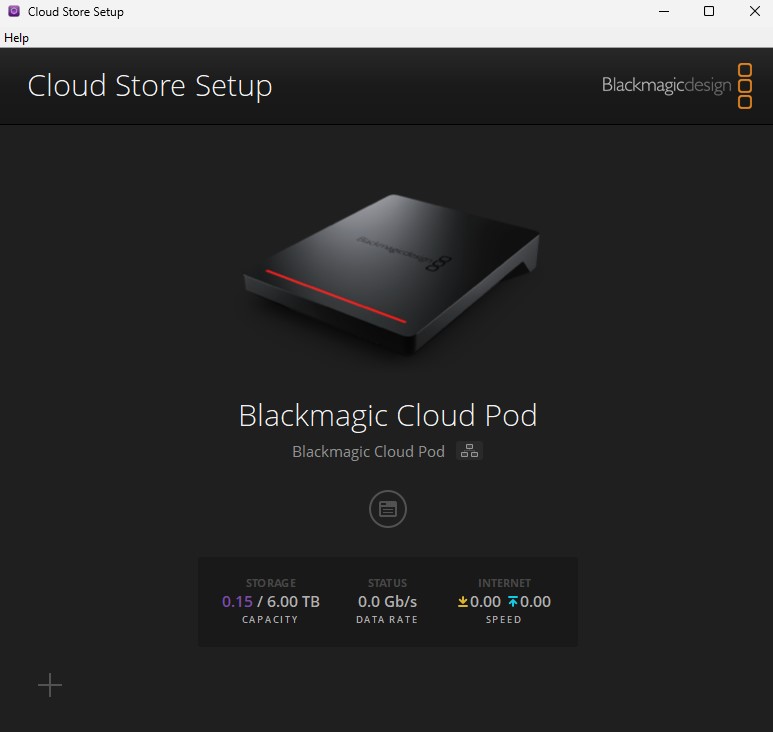
Here you can change the name, the IP address, and so forth.
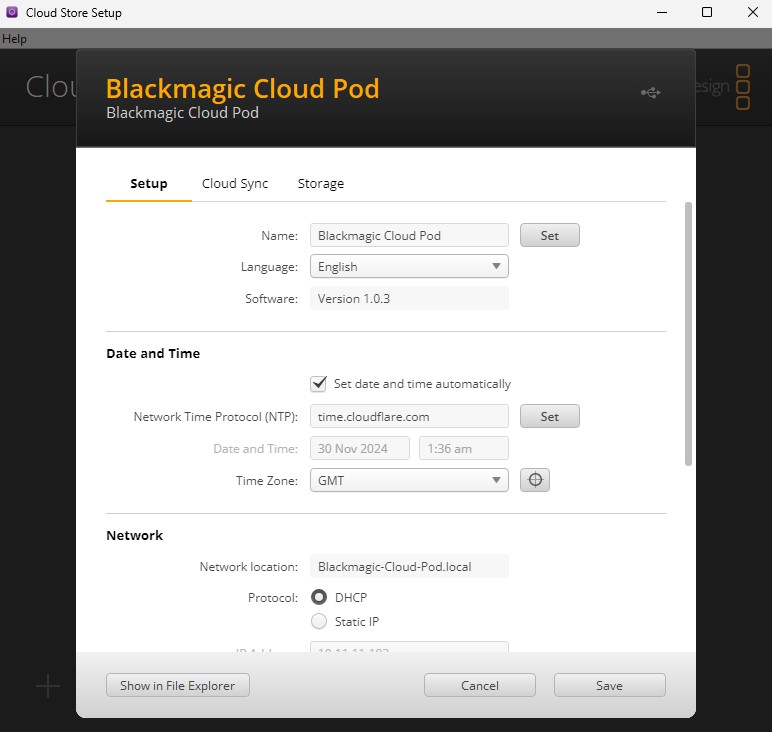
One cool feature is that you can also sign in to Dropbox or Google Drive and use it as a local cache. The proxies are a functionality that a lower-resolution version of a video file can be used for editing. Some video production workflows use proxies to ensure even lower-end systems can edit video. For example, if you were recording 8K RAW footage, not all computers can handle editing that, so using a proxy helps. The other big benefit is that by having smaller size proxy files, they can go over WAN connections faster.
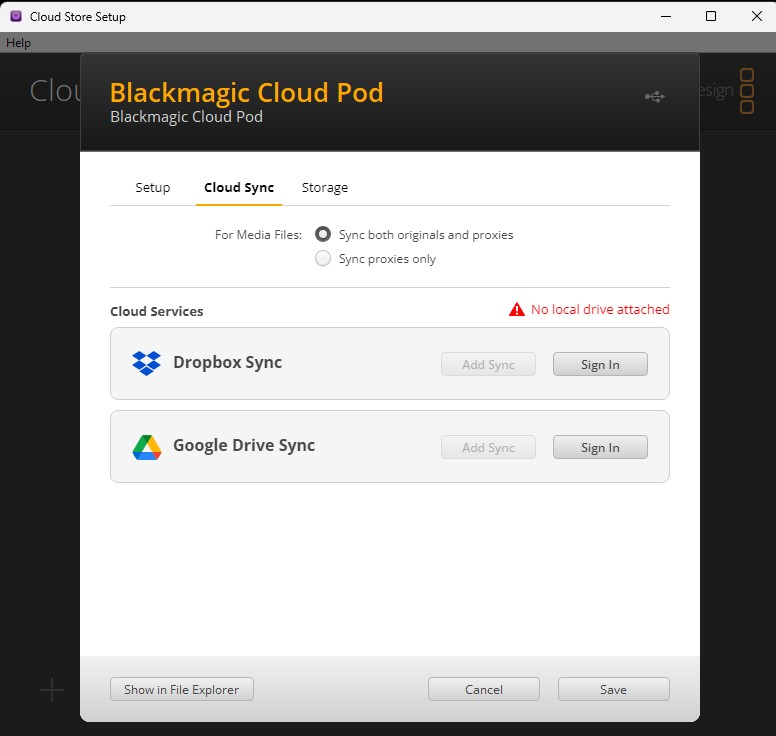
There is not a ton here. If you want to do user and folder management, this is the wrong device. On the other hand, if you just want to put two USB SSDs on a network, this is easy.
Blackmagic Cloud Pod Performance
Performance is perhaps not what you would expect. With two SSDs, you can use the 10GbE link. If you only have one SSD, then that is not the case.
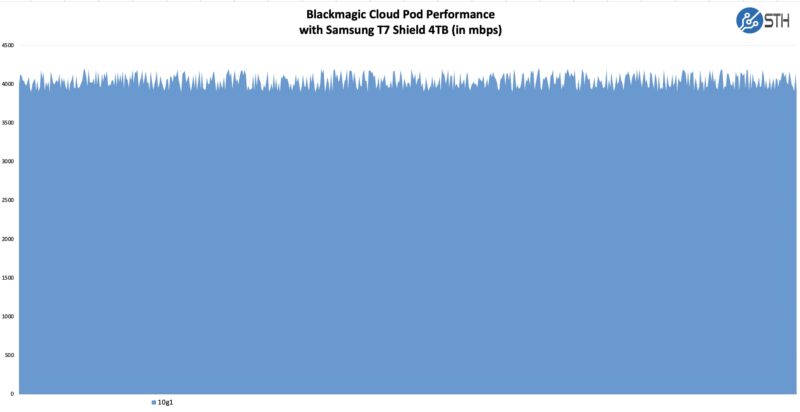
As you can see, we have a 5Gbps link to the SSD, so we are using less than half of the 10GbE link.
Blackmagic Cloud Pod Power Consumption
The power adapter that came with the unit has many regulatory markings and is a 5A 12V unit for 60W total.
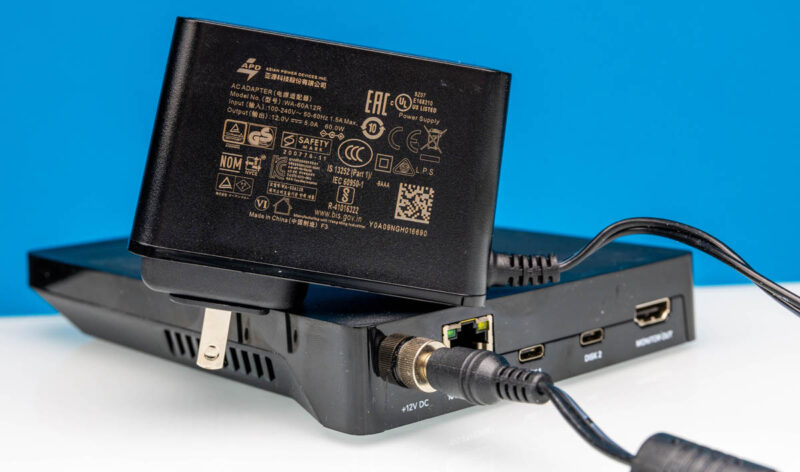
One nice feature is that the power input screws into the unit so it is relatively secure. We wish more NAS solutions use this type of solution.
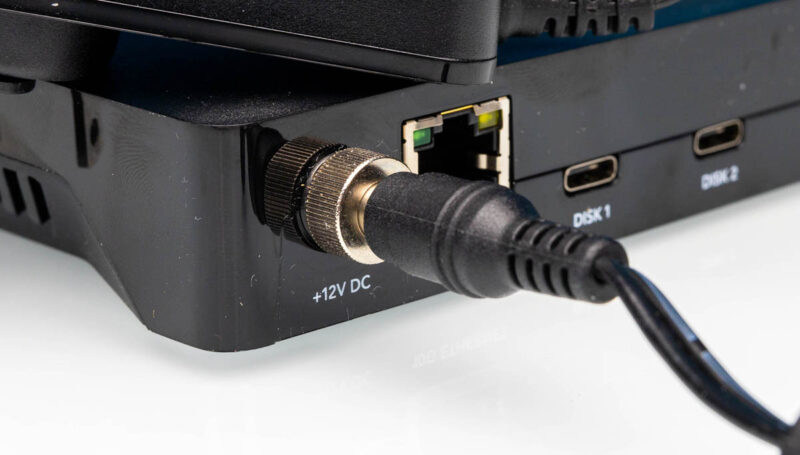
The base power consumption is around 8.6W. Add another 1.4-2W for the 10Gbase-T link.
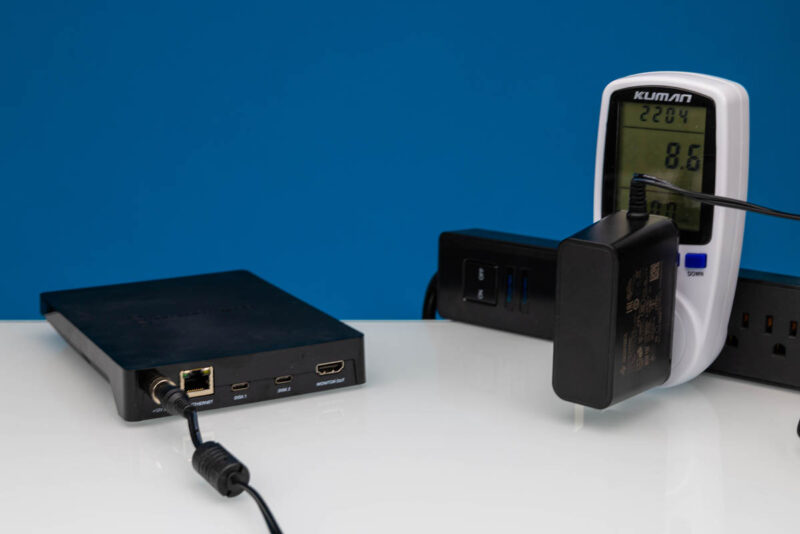
A bigger draw can be the USB SSDs since they need not only a data, but also a power connection. So the SSDs end up having a big impact.
Final Words
Everyone on our team looked at this initially and thought some form of “what is the point?” Then it sat around, until finally we started using it. Even without the cloud sync, it actually provides a very useful service. Imagine if you simply need to get USB SSDs onto a network. Perhaps because you need to share the storage. Or perhaps you ran out of USB ports that were easy to access.
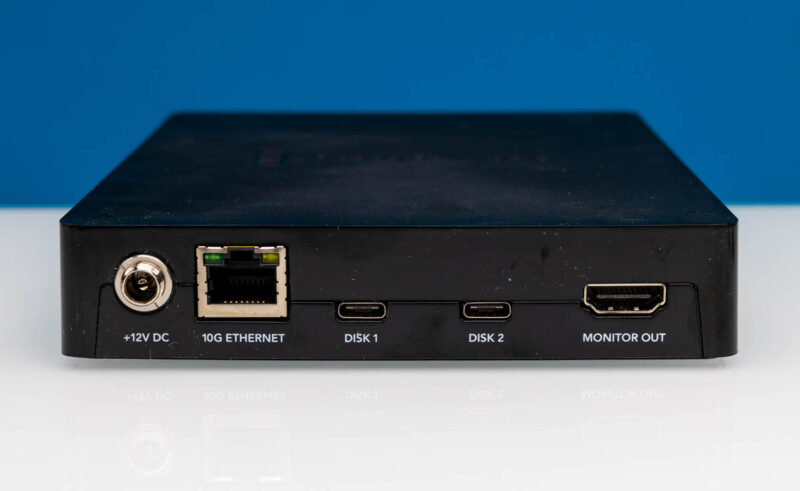
This might be the most basic NAS you can get. Maybe that is OK. Basic user and share management would be great. As would be having features like iSCSI. At a minimum, having 10Gbps USB Type-C ports is something that this really should have. Still, the Blackmagic Cloud Pod is just super easy. It might be the easiest NAS out there.
If you just want to check current pricing on the Cloud Pod, here is an Amazon Affiliate link.

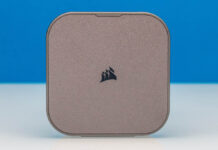
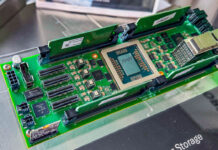
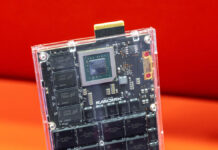
Thanks for the review. Looks interesting. Could you give a little more technical info please? Is it CIFS shares only or does it have other? What format(s) do does it support for the disks? I assume from the screenshots there is no encryption or other security, correct?
Blackmagic cloud pod, but all your captions say “google cloud pod”
does it support 8-bay disk shellf’s? like qnap d800c shelf?
My only issue with it is the price. I can see the use case.
I bought one of these for EXACTLY this use case. We’ve got to transfer acquired sensor data by USB drive. We’ve all got big Dell workstations so we just plug the drive into one of these and process it. I think we paid $399 but it saves us 30 minutes a day so it’s a bargain.
If you’re looking at one of these, the STH review is right. It’s a really simple device and that’s good and that’s bad depending on your expectations. If you’re conceptually thinking it’s a way to turn a USB drive into a simple network share that’s easy enough for my grandmother to use, then you’re about right with the concept.
I would get Mac Mini M4 with 10Gbe then share the drives.
I think you can use it as a NAS for direct video feeds with other Black Magic projects. For example recording 1080P SMPTE 2021 directly to it from a Black Magic camera or compressed 4K from their other recorders. The gear should have all the auto discovery stuff setup on both ends to simplify things. What does surprise me is that this doesn’t seemingly have a means of playing back recorded media as it’d be a pretty nice feature for such an appliance.
The other piece of Black Magic kit that has gotten my attention is a 10 Gbit primary with 100 Gbit uplink network switch designed for AV production work. Decent price compared to the bigger players (Cisco, Netgear, Extreme, etc.) and it has some VERY unique features: an HDMI port to watch video traffic that passes through it. Yeah, there is some security aspects about that worth bringing up but in a production environment where the network is (mostly) private, it is a pretty big deal to preview stuff flowing over the network. The other big feature is the ability directly through the front panel of the switch to do video routing between devices without the need to install an application on a computer that’s on that network. I know a few audio guys dealing with Dante and AVB who’d love that convenient feature if it worked on those protocols. Much will come down to its software as well as the robustness of the hardware. I do like Black Magic gear but they’ve had some lemons in the past: I’ve had 19 of 20 Web Presenters fail on me due to faulty internal power supplies.
Great review.
So if I understand this correctly, could I add a Cloud Pod to my local network and then mount it via NFS on machine on the network?
Could solve a very challenging workflow, where we want to access external drives (plugged in the office) from an AWS EC2 instance
@Nath: There are better options for that. If you’re attaching external drives in an office to mount to AWS/GCP, you’d probably be better off using a dedicated “attachment” server with a USB3 hub that supports multiple drives, then combine with a an auto-mount script to mount the usb drive. Then you just connect over nfs or something from AWS. I used to work for a cloud storage company and we did this when ingesting customer data, we had two racks of machines that had something like 8-12 port USB hubs that we’d then connect external drives to with customer data for ingesting. Plug 8 drives in, and a script would mount and auto-ingest data off the drive.
Doing something like this over a box like this gives you a lot more room to grow, since you can use multiple drives at once, plus you get the benefit of being able to grab SMART data from the drive, which I doubt this box provides.
Impressive! Thanks for sharing this.